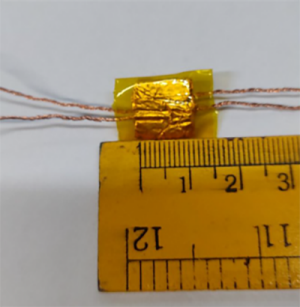If you watched the most recent Super Bowl, you know the importance of a referee’s call on the outcome of a game. Slow-motion replays and close-watching eyes help, but a new sensor technology could someday serve as an even more reliable tool for officials. Researchers reporting in ACS Applied Nano Materials have developed a self-powered, hybrid nanogenerator sensor that could help make more accurate calls and allow boxers and cricket players to practice more efficiently.
As sensors become less complicated and more ubiquitous, their applications have stretched into the world of sports, where they can offer detailed analyses to referees, coaches and players. But these sensors need to be small, self-powered and relatively cheap to be feasible. Two technologies well suited for this are triboelectric nanogenerators (TENGs) and piezoelectric nanogenerators (PENGs). Both work by converting mechanical energy into electric energy, albeit in different ways.
When combined into one hybrid nanogenerator, their individual shortcomings can be mitigated, but these devices have so far failed to find many practical applications. So, Nishat Kumar Das, Om Priya Nanda and Sushmee Badhulika from the Indian Institute of Technology wanted to create a sensor powered by a hybrid nanogenerator that could be used to monitor real-life performance in boxing and cricket.

A hybrid nanogenerator-powered sensor, shown above a ruler, could help improve performance and gameplay in boxing and cricket.
To manufacture their sensor, the researchers created nanofibers from lithium-modified zinc titanium oxide. These were layered with copper, a special kind of tape and other films with certain characteristics to create either a TENG or PENG. The PENG was mounted to a cricket bat and the stumps of a wicket — used similarly to the bases in American baseball. If the ball contacted the sensors, it produced a voltage that could be used to determine a call.
When used during practice, it provided data corresponding to the accuracy and power of the swing, with a response time of around 0.02 seconds. Then, they combined this PENG with a TENG to make a hybrid nanogenerator, four of which were then mounted to different parts of a punching bag.
The devices distinguished between the six different types of punches used in boxing, as well as the speed of each, giving a player and their coach information about their style. The researchers say that this work could pave a way for exploring other applications for nanogenerators in sports.
Read the original article on American Chemical Society (ACS).
